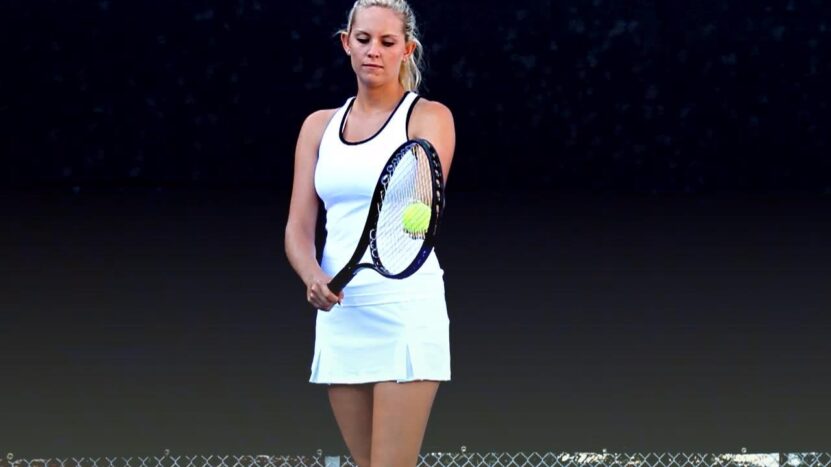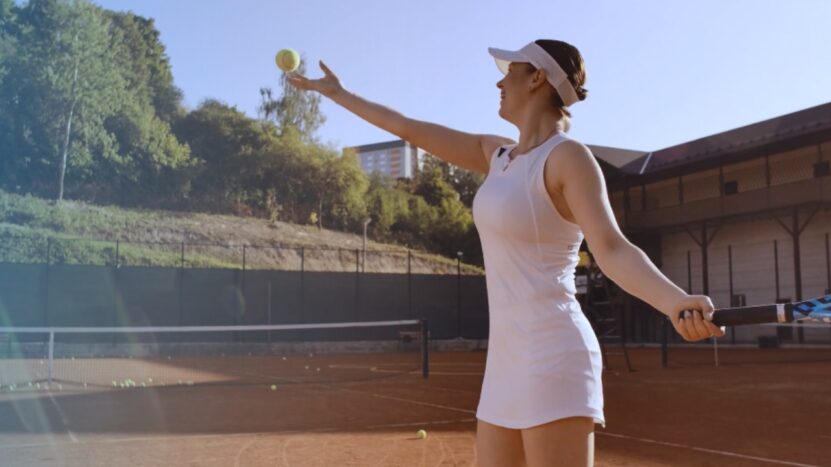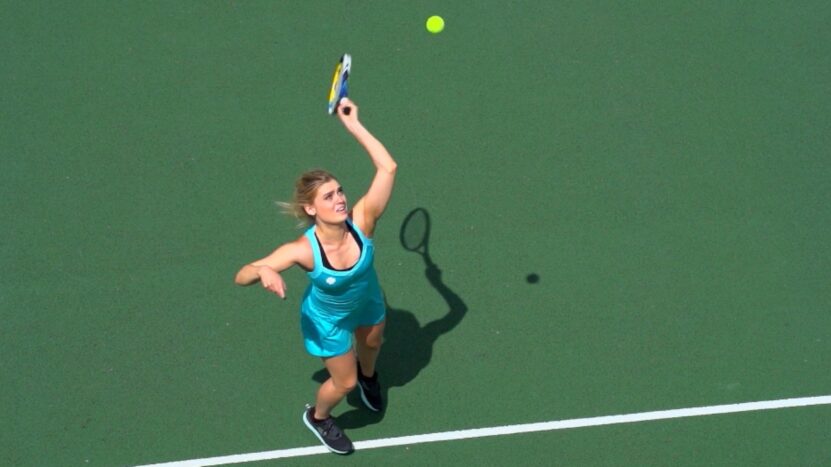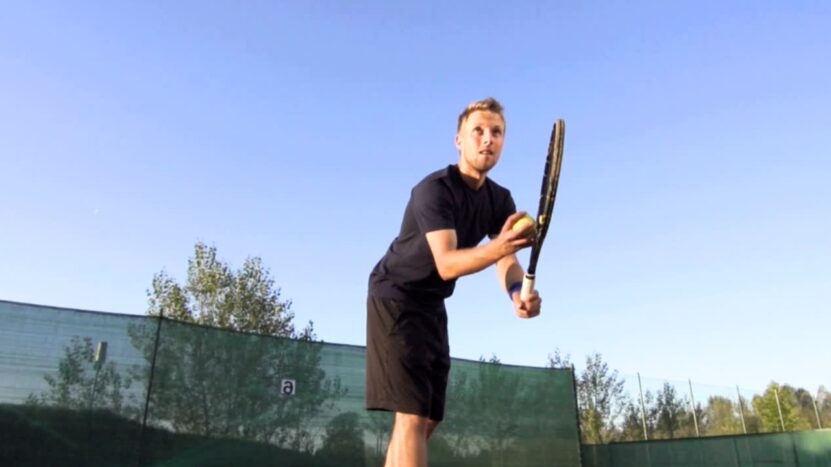Tennis, a sport renowned for its elegance and precision, holds within its ranks a term that symbolizes power, skill, and the thrill of the game: the ace. In the realm of tennis, an ace is more than just a mere point. It carries a distinct significance that can turn the tide of a match and leave spectators awestruck. Here, we unravel the definition, explore their impact, and examine the strategies behind this shot.
Definition of an Ace in Tennis

In the lexicon of tennis, an ace is a term used to describe a serve that is struck with such precision and speed that the opponent fails to make contact with the ball, resulting in an instantaneous point for the server.
Aces exemplify the server’s ability to dominate the game, leaving their opponent helpless and unable to respond. By avoiding any return from the opponent, an ace showcases the server’s exceptional serving skills and command over the match.
The Scoring System in Tennis
To fully grasp the significance of an ace, it is essential to understand the scoring system in tennis. Each game is divided into points, with the first point won referred to as 15, followed by 30 and 40. When both players reach a score of 40, it is called a deuce. To win a game, a player must earn two consecutive points after reaching the deuce.
A well-executed ace not only bypasses this intricate point progression but also grants the server an instantaneous point, effectively bypassing the opponent’s opportunity to return the serve. These hits provide a formidable advantage to the server and can contribute to winning not only individual games but also entire sets and matches.
How an Ace is Achieved in Tennis

Achieving an ace requires not only exceptional physical prowess but also tactical precision. The key lies in the server’s ability to strike the ball with optimal speed, placement, and spin, making it difficult for the opponent to predict and return. A combination of factors, including the server’s grip, stance, swing technique, and ball toss, play a crucial role in delivering a powerful ace.
Serving at different angles, varying the pace, and employing spins such as topspin or slice can further enhance the effectiveness of an ace. Strategic placement of the serve, targeting the corners or the T-shaped area on the opposite side of the court, can increase the chances of an unreturnable serve. Aces require a delicate balance of power, finesse, and precision, demanding relentless practice and mastery of the server’s craft.
Importance and Impact
Aces possess a significant impact on the course of a tennis match, both physically and psychologically. From a physical perspective, an ace earns the server an immediate point, placing them in an advantageous position and increasing their chances of winning a game or set. It not only saves energy by preventing lengthy rallies but also disrupts the opponent’s rhythm, potentially undermining their confidence and focus.
The psychological effect of an ace cannot be underestimated; it sends a powerful message to the opponent, showcasing the server’s dominance and often instilling fear and apprehension. Aces can even sway the momentum of an entire match, altering the dynamic and dictating the flow of play. The ability to consistently deliver such shots not only establishes a player’s reputation but also contributes to their overall success in the game.
Strategies for Serving Aces in Tennis

Serving aces requires a combination of skillful execution and strategic thinking. Players often employ various strategies to increase their chances of hitting unreturnable serves. One approach involves maximizing the serve’s speed by generating significant racquet-head velocity through a powerful leg drive and shoulder rotation. Another tactic is utilizing the element of surprise by mixing up serves, alternating between flat, topspin, and slice serves.
The incorporation of body feints, changing the ball toss position, and disguising the intended direction can add an additional layer of complexity, making it harder for the opponent to anticipate and respond to the serve. Players must also remain adaptable and adjust their serving strategies based on the opponent’s weaknesses and court conditions. By combining technical finesse, mental acuity, and strategic thinking, players can enhance their chances of serving aces and gaining a competitive edge.
Record Holders for Most Aces in Tennis

Throughout the history of tennis, there have been exceptional players who have mastered the art of serving aces, leaving an indelible mark on the sport. One of the most revered record holders for the most aces in a career is Ivo Karlovic, known for his towering height and thunderous serves. With a career tally of over 13,500 aces, Karlovic’s proficiency in serving aces has set a benchmark for aspiring players.
Other notable names in the record books include Goran Ivanisevic, who served a staggering 10,183 aces, and Roger Federer, renowned for his fluid and precise service motion, contributing over 10,000 to his illustrious career. These record holders exemplify the importance of scoring points like this and the impact they can have on a player’s legacy.
Ace as a Statistical Measure in Tennis
Aces not only play a pivotal role during a match but also serve as a statistical measure to evaluate a player’s serving prowess. Tennis statisticians meticulously record the number of aces a player serves, offering insights into their efficiency and effectiveness on the court. This statistical measure provides a quantifiable assessment of a player’s serving skills and serves as a basis for comparison between players.
Ace statistics contribute to the analysis of overall player performance, aiding in the assessment of strengths and weaknesses. By studying these statistics, coaches, analysts, and players themselves can gain valuable insights, informing strategic decisions and training regimens to further improve their serving abilities.
Famous Matches or Moments Involving Aces
The history of tennis is replete with iconic matches and unforgettable moments centered around aces. One such moment etched in the annals of tennis history is the 2010 Wimbledon first-round clash between John Isner and Nicolas Mahut. Lasting a staggering 11 hours and 5 minutes, this marathon match witnessed a record-breaking 216 aces, with Isner hitting 113 and Mahut 103.
The match went down as the longest in tennis history. It epitomized the physical and mental endurance required to serve and return aces at an exceptional level. Other notable matches include Goran Ivanisevic’s triumphant Wimbledon victory in 2001. The now-coach of Djokovic served a staggering 213. Some 18 years later, the captivating 2019 Wimbledon final between Novak Djokovic and Roger Federer happened. It showcased their incredible serve-and-volley skills, including a combined total of 54. These matches stand as a testament to the captivating and awe-inspiring nature they have in tennis.
Variations and Types
While the primary definition of this shot remains consistent, the world of tennis acknowledges variations and types of aces that add a unique flair to the game. Some players are renowned for their “big-swing aces,” characterized by blistering serves that leave opponents helpless. Others excel at “placement aces,” expertly directing serves to specific areas of the court, making it incredibly challenging to return.
“Off-speed aces” rely on varying the pace and spin of the serve, disrupting the opponent’s timing and forcing errors. Each variation showcases the individual player’s style and adds an element of intrigue and unpredictability to the game. Players can further hone their craft, adapt to different situations, and unleash an arsenal of aces. They will surely captivate audiences worldwide.
FAQs
1. How fast can a tennis serve be for an ace to occur?
The speed required for an ace varies among players, but it generally falls within the range of 120-150 mph (193-241 km/h). However, some exceptional servers have been known to achieve speeds exceeding 160 mph (257 km/h).
2. Are there any players known for their exceptional ace-to-double fault ratio?
Yes, players like Ivo Karlovic and John Isner are renowned for their high ace-to-double fault ratios. They possess exceptional serving skills, allowing them to consistently hit aces while minimizing double faults.
3. Are aces equally possible on all different court surfaces?
Absolutely. While the speed and bounce may vary on different court surfaces, skilled players can still achieve aces regardless of the surface. They adapt their serving techniques and strategies to suit the specific conditions of each court.
4. Are there any specific strategies to counteract aces and improve return rates?

Returning aces can be challenging, but players can employ certain strategies to increase their chances. These include anticipating the opponent’s serve patterns, positioning themselves optimally, reading the server’s body language, and practicing quick reflexes to react swiftly to powerful serves.
5. How does the average number of aces per match vary between professional men’s and women’s tennis?
Generally, the average number of aces per match is higher in men’s tennis than in women’s tennis. This discrepancy is a testament to the differences in serving power and speed between male and female players. However, there are exceptional female players famous for their formidable serving skills and ability to hit a significant number of aces.
Final Words
In the realm of tennis, an ace stands as a symbol of excellence, power, and mastery. It embodies the culmination of skill, strategy, and physical prowess that elevates the game to new heights. Aces redefine the dynamics of a match, leaving both players and spectators enthralled by their speed, precision, and impact.
Through a thorough exploration of the definition, scoring system, achievement, importance, strategies, records, statistical measure, memorable moments, and variations of aces in tennis, we have unraveled the captivating essence of this extraordinary feat. When you witness a thunderous serve leaving the opponent stunned, you will appreciate the magic more!

